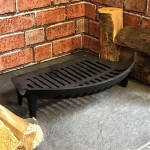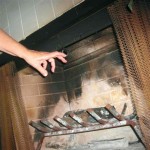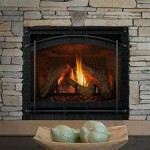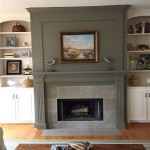Lexington Tabletop Fireplace: A Comprehensive Overview
The Lexington tabletop fireplace represents a contemporary evolution in home décor and ambient heating. It provides a localized source of warmth and visual appeal, often utilizing clean-burning fuel like isopropyl alcohol or bio-ethanol. Unlike traditional fireplaces, the Lexington tabletop variant requires no chimney, venting, or permanent installation, making it a versatile and accessible option for a wide range of environments, from apartments and condos to covered patios and dining tables. These fireplaces are increasingly popular for creating a cozy atmosphere during social gatherings, adding a touch of elegance to interior design, or simply providing a personal haven of warmth.
The design and construction of a Lexington tabletop fireplace typically encompass several core components. A sturdy base, often constructed from materials like stainless steel, concrete, or tempered glass, provides stability and support. Within this base resides a fuel reservoir, carefully engineered to hold the chosen fuel source. A burner or wick system facilitates the controlled combustion of the fuel, creating the visible flame. Surrounding the burner, decorative elements such as river rocks, ceramic logs, or tempered glass panels can be added to enhance the aesthetic appeal and personalize the overall look. The selection of materials is crucial, prioritizing heat resistance, safety, and visual coherence with the intended décor.
The functionality of a Lexington tabletop fireplace is relatively straightforward. The fuel reservoir is filled with the specified fuel, typically following manufacturer guidelines to avoid overfilling or spillage. The burner or wick is then ignited, using a long lighter or match to maintain a safe distance from the flame. The flame intensity can often be adjusted using a damper mechanism or by adding or removing fuel. The heat output is generally modest, providing a focused warmth ideal for smaller spaces or personal comfort. Safety precautions are paramount, including keeping flammable materials away from the fireplace, ensuring adequate ventilation, and always supervising the burning flame. Extinguishing the flame usually involves smothering it with a dedicated snuffer or closing a damper to deprive it of oxygen.
Safety Considerations and Fuel Options
Safety is the foremost consideration when operating a Lexington tabletop fireplace. Understanding the properties of the chosen fuel is crucial. Isopropyl alcohol, often used in smaller models, is readily available but produces less heat and may have a noticeable odor. Bio-ethanol, a renewable fuel derived from plant-based sources, is generally considered a cleaner-burning option with minimal odor. Regardless of the fuel type, it must be handled with care to prevent spills or ignition outside the designated burner area. The fireplace should always be placed on a stable, heat-resistant surface, away from curtains, paper, or other flammable items. A fire extinguisher or damp cloth should be readily accessible in case of an emergency.
Supervision is paramount when the fireplace is in operation. Never leave a burning tabletop fireplace unattended, especially in the presence of children or pets. The flame, while aesthetically pleasing, poses a potential fire hazard. Informing everyone in the vicinity of the precautions is essential. Refueling should only occur when the flame is completely extinguished and the unit has cooled down significantly. Always allow sufficient time for the fireplace to cool before handling it or attempting to move it. Following these safety guidelines ensures a responsible and enjoyable experience with a Lexington tabletop fireplace.
Furthermore, the quality of the fuel directly impacts the performance and safety of the fireplace. Low-quality fuels may produce more soot, odor, or uneven flames. Purchasing fuels from reputable suppliers ensures a consistent and predictable burn. Proper storage of the fuel is also essential. It should be kept in a tightly sealed container, away from heat sources and out of reach of children. Inspecting the fireplace regularly for any signs of damage, such as cracks in the base or leaks in the fuel reservoir, is critical. Addressing any issues promptly prevents potential hazards.
Design and Aesthetic Integration
The Lexington tabletop fireplace serves not only as a source of warmth but also as a decorative accent. Its design can be seamlessly integrated into a variety of interior styles, from modern minimalist to rustic farmhouse. The wide range of available materials, shapes, and finishes allows for personalization and customization. Stainless steel models offer a sleek and contemporary look, while concrete versions provide a more industrial or earthy aesthetic. Tempered glass panels can add a touch of elegance and reflect the surrounding light, enhancing the ambiance.
The choice of decorative elements further contributes to the overall aesthetic appeal. River rocks, ceramic logs, or decorative glass beads can be arranged around the burner to create a visually appealing focal point. The size and shape of the fireplace should be carefully considered in relation to the surrounding space. A smaller model is suitable for a coffee table or desk, while a larger version may be more appropriate for a dining table or outdoor patio. The color and texture of the materials should also complement the existing décor. A harmonious integration of the fireplace into the overall design scheme enhances the visual appeal of the space.
The placement of the Lexington tabletop fireplace plays a crucial role in its aesthetic impact. Positioning it in a central location, such as the center of a table or on a mantelpiece, draws attention and creates a focal point. Alternatively, placing it in a corner or on a shelf can add a subtle touch of warmth and ambiance. The lighting in the room should also be considered. Dimming the lights or using accent lighting can enhance the flickering flames and create a more intimate atmosphere. Experimentation with different placements and lighting options allows for achieving the desired aesthetic effect.
Environmental Impact and Fuel Considerations
The environmental impact of a Lexington tabletop fireplace is largely determined by the type of fuel used. Isopropyl alcohol, while readily available, is a petroleum-based product and contributes to greenhouse gas emissions. Bio-ethanol, derived from renewable resources like corn or sugarcane, is generally considered a more environmentally friendly option. However, the production of bio-ethanol can also have environmental consequences, such as land use changes and water consumption. It is important to consider the entire life cycle of the fuel when assessing its environmental impact.
The efficiency of the fireplace also plays a role in its environmental footprint. A more efficient burner system will consume less fuel and produce less emissions. Choosing a model with adjustable flame control allows for optimizing fuel consumption and minimizing environmental impact. Proper maintenance of the fireplace, such as cleaning the burner and removing any debris, also contributes to its efficiency. Regular cleaning ensures optimal combustion and reduces the amount of soot and other pollutants emitted into the air.
Responsible disposal of fuel and ash is another important consideration. Empty fuel containers should be disposed of according to local regulations. Ash from the burner should be allowed to cool completely before being disposed of in a non-combustible container. Avoid pouring excess fuel down the drain or into the environment. By adopting responsible fuel management practices, the environmental impact of a Lexington tabletop fireplace can be minimized. Supporting sustainable fuel production and choosing energy-efficient models further contributes to environmental responsibility.
In conclusion, the Lexington tabletop fireplace offers a compelling blend of aesthetic appeal, localized warmth, and ease of use. Understanding the nuances of safety protocols, design integration, and environmental considerations maximizes the benefits and minimizes the risks associated with its operation. Careful selection of fuel, diligent maintenance, and adherence to safety guidelines ensure a satisfying and responsible experience.

Lexington Tabletop Bio Ethanol Fireplace Naturehills Com

Anywhere Fireplace 8 White Lexington Tabletop Bio Ethanol Us

Lexington Tabletop Liquid Gel Bio Ethanol Fireplace 90204 Mantels Direct

Lexington Tabletop Bio Ethanol Fireplace In White Anywhere

Lexington Tabletop Ethanol Fireplace In Black High Gloss Anywhere

Gramercy Indoor Outdoor Freestanding Fireplace Anywhere

Lexington Tabletop Bio Ethanol Fireplace Naturehills Com

Lexington Model Tabletop Bio Ethanol Fireplace In High Gloss Blue Open Box Anywhere

Anywhere Fireplace Lexington Indoor Outdoor Table Top The

Lexington Fireplace Bio Ethanol Indoor Trovati Studio








